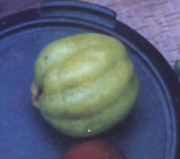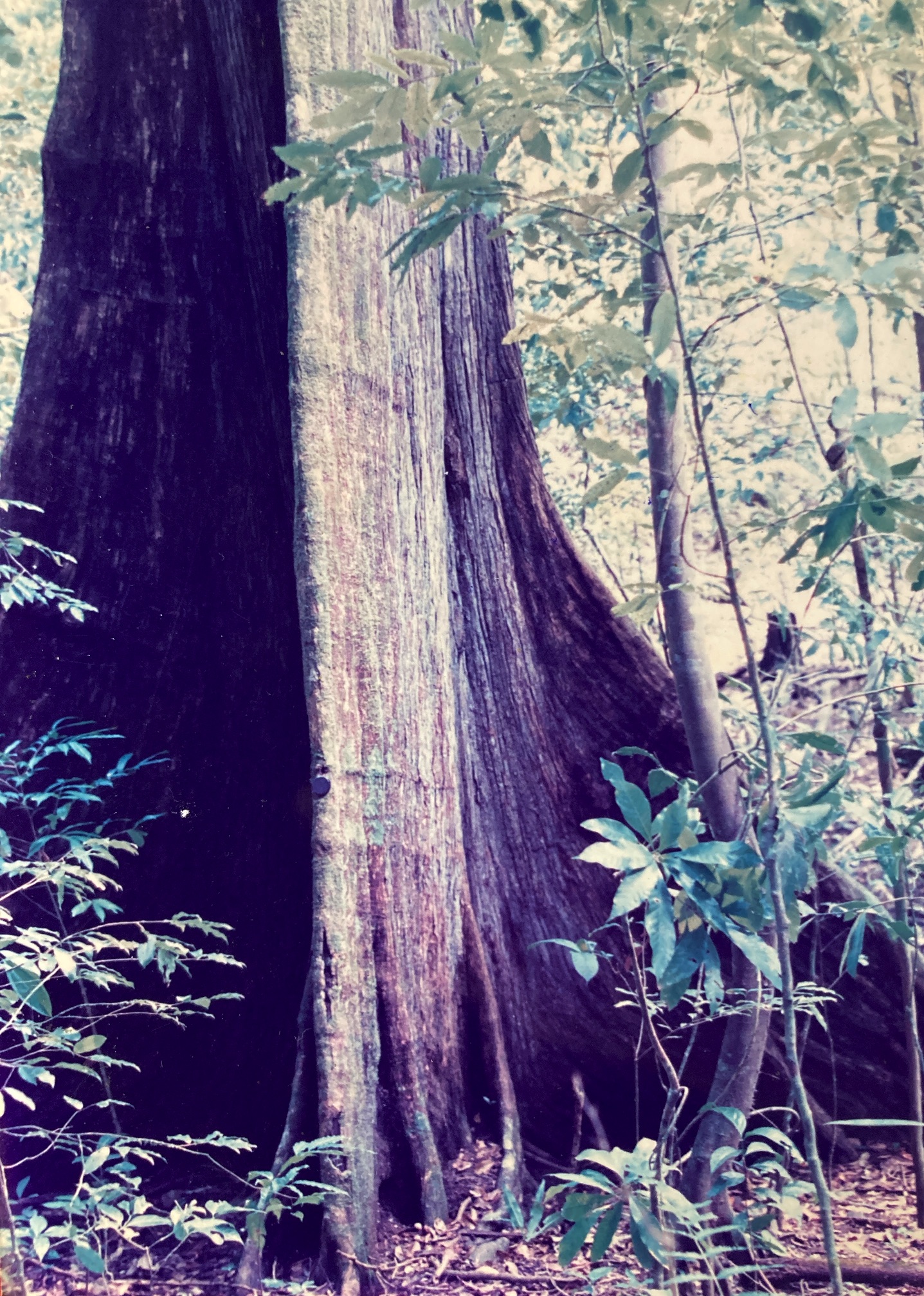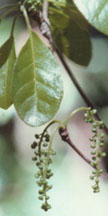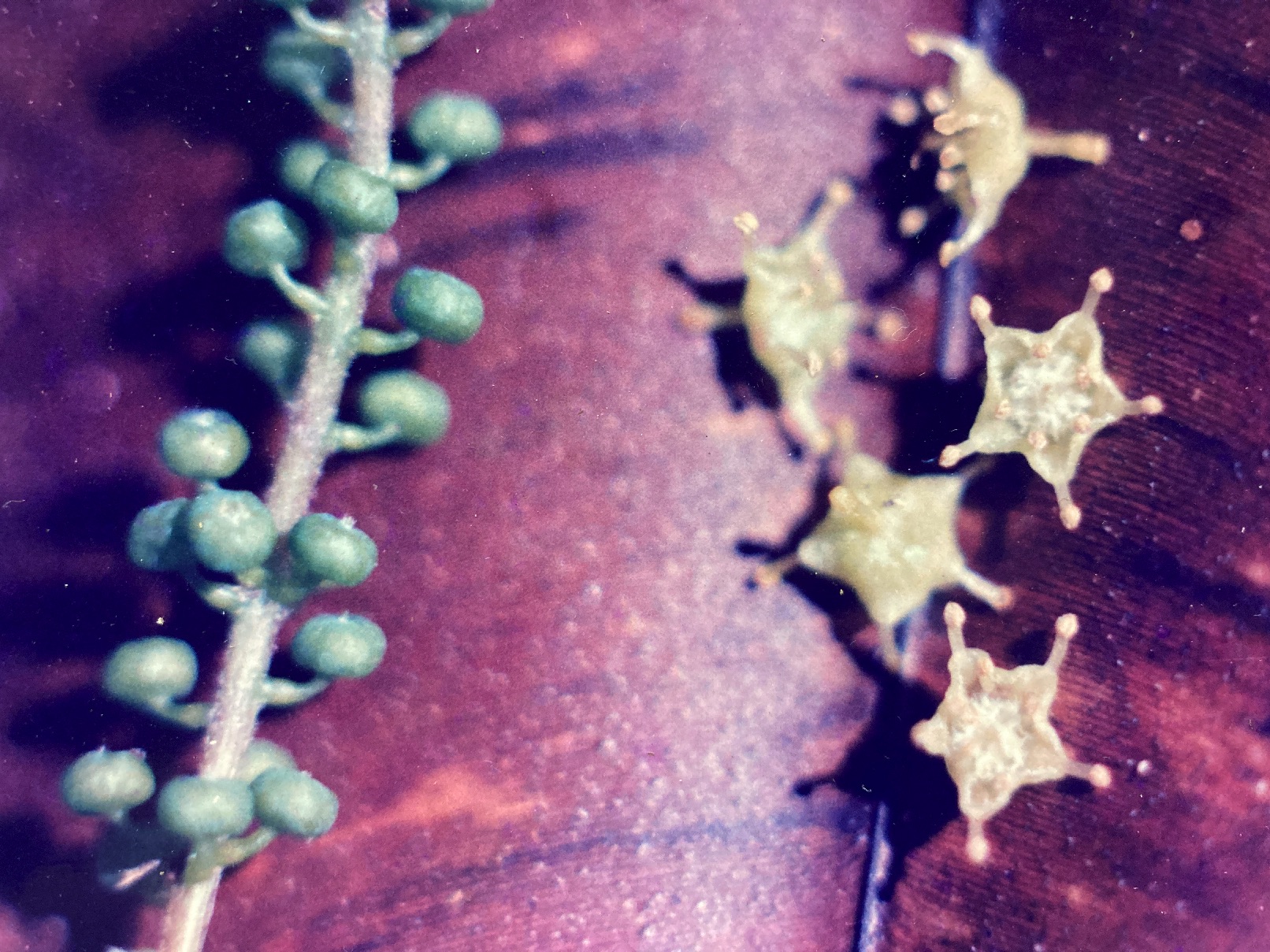Buchenavia costaricensis Stace sp. nov.
Occasional evergreen (or briefly deciduous) canopy (35 m) tree with a widely buttressed, massive trunk and an ample, spreading crown. Individual trees of this species are found widely scattered throughout the primary forest, growing in all types of habitats except for the sandy coastline. Despite being a tree of immense proportions, Buchenavia remained undetected amid the Manuel Antonio flora until 1990, when it was first collected (by me!) and recognized as a new species. Now also known from the Osa Peninsula, its range is restricted to southwestern Costa Rica.
Description: Buchenavia has a massive, straight trunk (1.5 m or more) that initially is somewhat angular and prismatic but that becomes more cylindrical with height. It’s base is surrounded by tall (2 m), thin, sheet-like buttresses that radiate outwards for up to three meters before sinking into the soil. The unlikely trunk shape produced by their great number, large size, thinness, and often parallel arrangement is often stunning. Buchenavia bark is light gray and characteristically grooved by narrow and dark vertical fissuring. Branching is confined to the extreme upper portion of the tree, where massive limbs spread out horizontally for tens of meters. They create a single-layered, umbrella-like or flat-toped crown of great diameter that shades a large swath of the forest floor beneath it. Mature specimens of this species are indeed commanding, evoking awe from all who behold them – certainly Buchenavia is among the most superlative of Costa Rican trees. As the branches successively subdivide, they form a series of upwardly-curving, concave arcs that decrease in diameter as they cascade toward the edges of the crown.
Leaves are then borne in whorl-like clusters around the widened tips of the thin, curved twigs. Each leaf (9 by 3.5 cm) is simple, alternate, and long-petioled (2.5 cm). Smooth and light green, they are tear-drop shaped (obovate) – with rounded apices and tapered bases. Trees start loosing leaves slowly in late September and then more rapidly in October. From November to mid-December, the crowns are usually completely bare. By the end of the year, new leaves have begun to expand rapidly and the fresh, yellow-green foliage cover is complete by early January.
Simultaneous with, or slightly preceding leaf production, is the appearance of many stringy flower racemes. Each long, dangling raceme (14 cm) bears about 35 minute flowers (3 mm in diameter). The petal-less blossoms consist only of a yellow, star-shaped, five-point calyx, 10 short stamens, and a central pistil. Faintly aromatic, they emit a sweet and fruity fragrance. Buchenavia‘s annual flowering period is exceedingly brief, prolific, precisely timed (from season to season), and well synchronized. It occurs between late December and early January with individual trees maintaining open flowers for only about 10 days.

Fruits begin to grow immediately, slowly developing over the course of about eight months – with the abortion of small fruits occurring continuously throughout this time. They mature as globular or semi-globular (2.5 cm), glossy yellow drupes contoured with longitudinal, pumpkin-like ridges. The stiff flesh is filled with a sweet-smelling, fruity sap and it covers one fibrous, almond-shaped seed (1.5-2.0 cm). Ripe fruits hang vertically from the old flower raceme stalks, resembling yellow Christmas ornaments nestled amid the green foliage of the canopy. Harvests are annual and extended events, with the yellow fruits slowly falling from the trees from late July through early November. Seeds begin germinating a few weeks after fruit-fall, the first seedlings appearing on the forest floor in August. They emerge with their seed-leaves furled – a characteristic common to many species of the Combretaceae family – resembling smaller versions of Almendro seedlings.
Similar Species: Buchenavia‘s unique leaf shape and arrangement, coupled with its massive trunk and extended crown, make this tree species unmistakable in the field.
Natural History: This tree’s flowers are insect pollinated, while its fruits have been observed to fall from the crown and rot under the parent tree – with no effective dispersal agent apparent – at least in Manuel Antonio National Park. Possibly, the seeds are dispersed by mammal species no longer present among the extant fauna in this small park – with spider monkeys being particularly likely candidates. The young, tender seedlings are frequently browsed by ground-dwelling lizards.
Distribution: In Manuel Antonio, isolated Buchenavia trees are found sporadically distributed amid all types of inland primary forest. Its range is limited to Costa Rica’s southern Pacific lowlands where it is protected only by Manuel Antonio and Corcovado National Parks.
Photos: Tree Trunk Trunk2 Leaf Flower Flower2 Flower Bud Fruit



